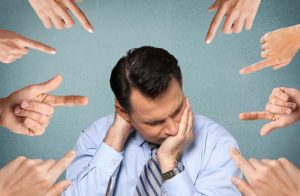Give me liberty or give me disease: The showdown between public health and freedom
By KevinMarcilliat, In Safety Tips, 0 Comments
The United States is now the epicenter of the coronavirus pandemic, with more than 750,000 cases (and counting). Ninety-five percent of the country remains under lockdown orders. Yet that hasn’t stopped protesters from taking to the streets, risking arrest – and COVID-19 – to voice their opposition.
By and large, the protesters are Trump supporters: right-wing populists in favor of less government. “Government is the only non-essential business,” declares one sign.
The protesters have been hit hard by the economic fallout. Many are convinced that the lockdown is an overreaction, the result of media-induced hysteria and conspiracy theories involving “Big Pharma.” They viciously defend their right to not wear face masks. “My Body, My Choice,” read some signs (ironically echoing their opponents in the abortion debate). Some are even asserting their “right” to contract COVID so they can get over it and get on with it.
Fundamentally, they want life to go back to normal. They want to go out for beers and bowling. They want haircuts. “It’s time for our state to be opened up,” said one Michigan protester. “We’re tired of not being able to buy the things that we need, go to the hairdressers and get our hair done.”
Economically, we’re in for a long haul
Certainly, the economy is suffering. Unemployment rates are soaring. Small businesses are shutting their doors. The International Monetary Fund anticipates it will be the worst economic collapse since the Great Depression.
Ending the lockdown, however, won’t suddenly fix everything. It will be much harder – and take much longer – to ramp the economy back up than it did to shut it down.
Is sheltering in place really that bad?
Economics aside, remaining at home is easier now than any time in history. Thanks to technology, many can work remotely and video chat to stay connected with friends and family. Grocery delivery and takeout are readily available. In most places, people can still visit parks and get outside, social distancing permitting.
By contrast, Anne Frank (and others) spent years hiding indoors during the Nazi persecution.
Trump’s stance
In typical fashion, Trump has dumped fuel on the fire, tweeting solidarity with the protesters and echoing their call to “LIBERATE” several states (which happen to have Democratic governors). Desperate to salvage the economy, he declared via Twitter that the country is starting to “OPEN FOR BUSINESS” once again.
Meanwhile, experts widely agree that the pandemic hasn’t peaked yet. Anthony Fauci, director of the National Institute of Allergy and Infectious Diseases, warns that ending shelter-in-place restrictions prematurely could backfire.
Who has the authority, anyway?
Last week, Trump announced that he alone had the power to end lockdowns. He later backtracked, agreeing to defer to the states’ power to protect the health and safety of their citizens. The President doesn’t have the authority to either impose a lockdown or revoke one. (That broad police power is reserved to the states by the Tenth Amendment.)
He can, however, issue recommendations. The latest guidance from the White House proposes a phased re-opening, slowly easing up the lockdown but maintaining social distancing and ramping up testing.
By encouraging the protesters, Trump seems to be undermining his own administration – or even, arguably, inciting insurrection. In the debate between public health versus liberty, both, it seems, take a backseat to politics.









